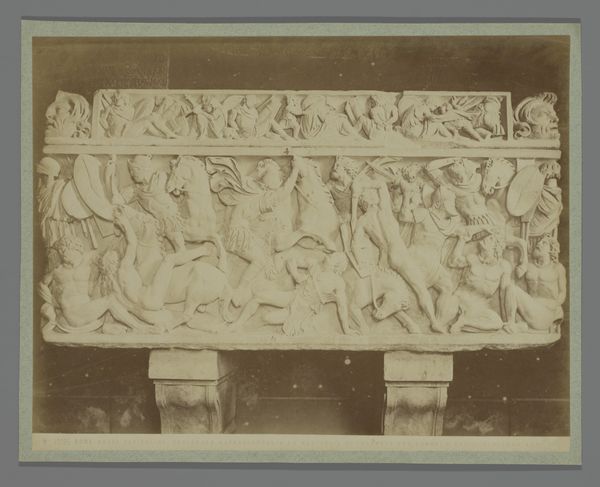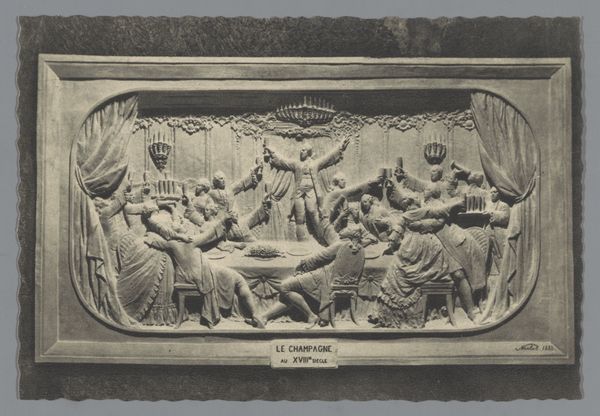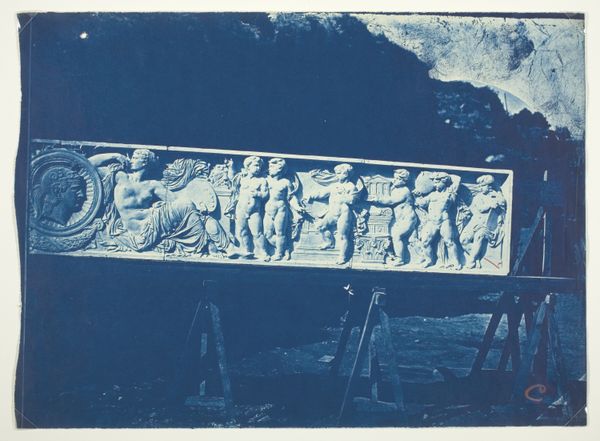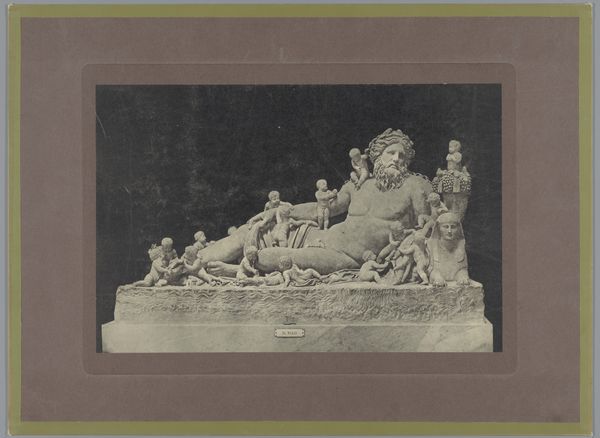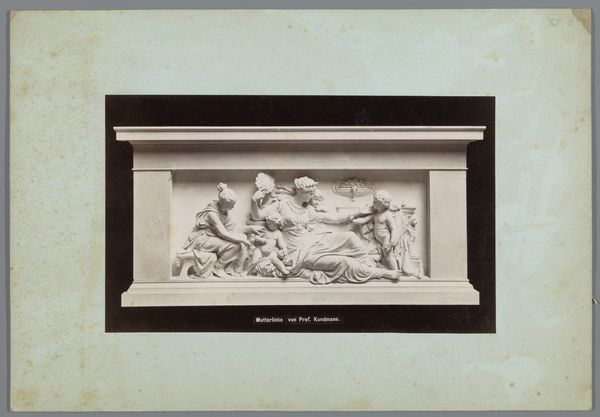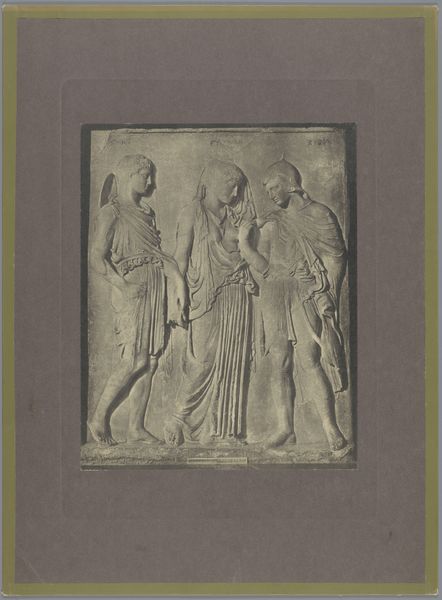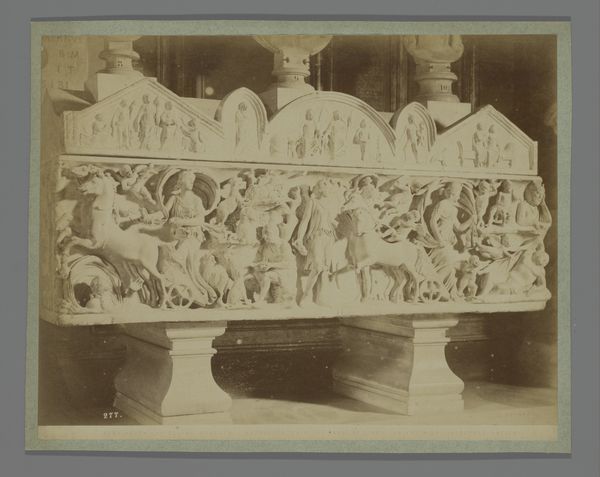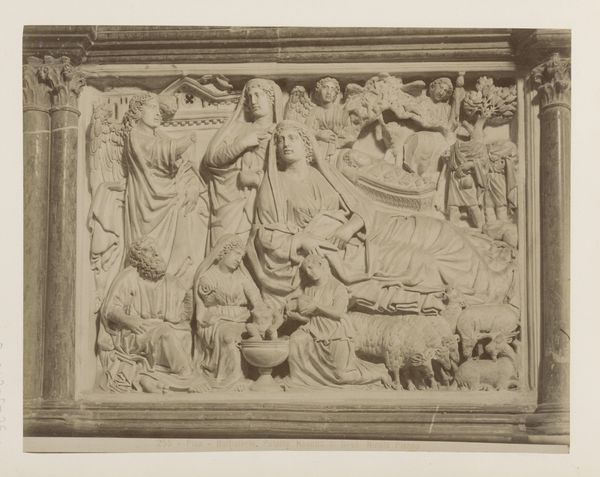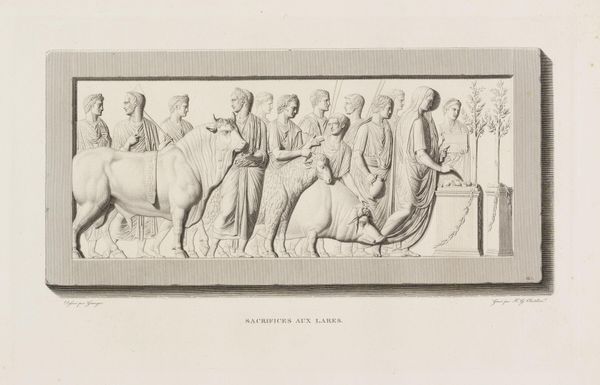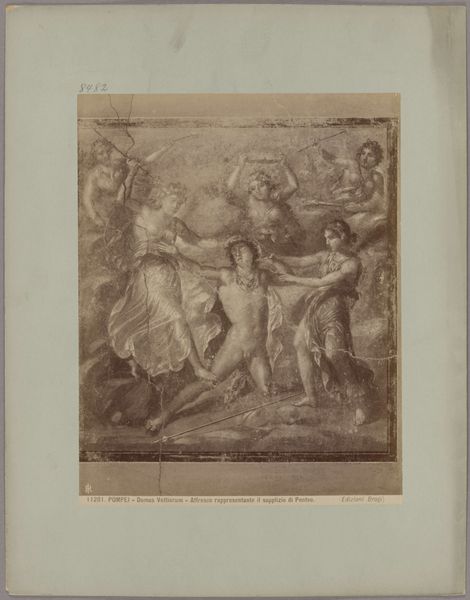
relief, photography, sculpture, gelatin-silver-print, marble
#
portrait
#
sculpture
#
greek-and-roman-art
#
relief
#
photography
#
ancient-mediterranean
#
sculpture
#
gelatin-silver-print
#
history-painting
#
marble
Dimensions: height 210 mm, width 270 mm
Copyright: Rijks Museum: Open Domain
Curator: This gelatin-silver print showcases the Sarcophagus of Severus Alexander and his mother, Julia Mamaea. It dates back to the late 19th or early 20th century and offers a compelling glimpse into Roman funerary art. Editor: The sheer weight of it strikes me first—visually, I mean. The dense composition, the somber tone of the photograph, it all suggests immense gravity, both literally and figuratively. Curator: Precisely. Roman sarcophagi weren't merely containers; they were statements about the deceased. The relief carvings that adorn it, a staple of Roman sculpture, weave together scenes of military campaigns and dynastic imagery intended to solidify their place in Roman history. Note that lid features sculptures of the pair that recline in a simulated pose. Editor: I find it fascinating how the artist has composed the relief. The figures are densely packed, creating a continuous narrative across the surface. There's a deliberate tension between the individual forms and the overall structure. Is this overcrowding an attempt to portray some deeper understanding? Curator: It's possible. The crowding suggests a complex story of ambition and legacy. Each figure likely represents an aspect of Severus Alexander's life or virtues promoted by his mother. The repetition of certain motifs reinforces their imperial power. Their shared image invites an examination of cultural values, as it suggests both strength and imperial ambition. Editor: Absolutely. Beyond the specific historical figures, I see recurring archetypes of power, leadership, and even sacrifice that continue to echo through art and culture today. A reminder of history. The composition speaks to an urge to control chaos. Curator: And that’s why such funerary art holds lasting meaning, providing a vessel not just for remains, but also for lasting cultural impact. Editor: A compelling thought—to see how form carries weight in meaning, quite literally. Curator: Indeed, the photo serves as a vessel for time, carrying with it Roman ambition and a mother’s pride.
Comments
No comments
Be the first to comment and join the conversation on the ultimate creative platform.


